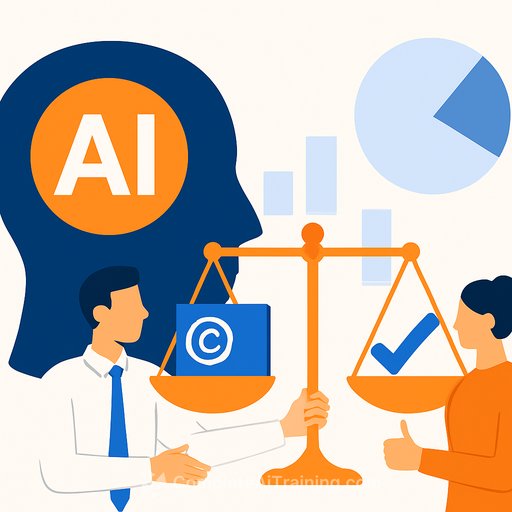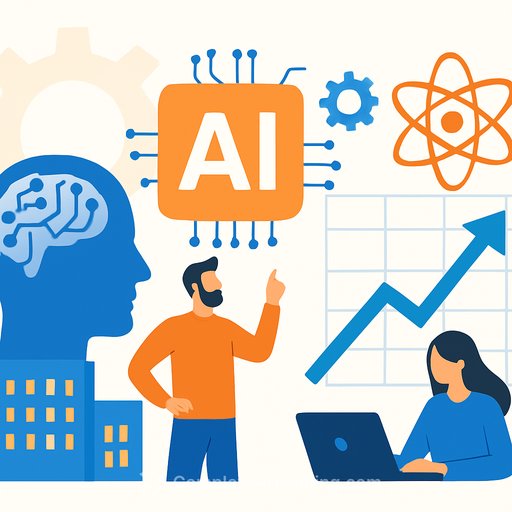AI Image Search Techniques Have Evolved into Creative Intelligence
There was a time you typed "cat," crossed your fingers, and hoped the results felt close. That era is over. Image search no longer hunts for objects - it reads style, mood, and intent. For creatives, that shifts how ideas get found, reused, and turned into work.
From pixels to culture
Early systems leaned on feature detectors like SIFT and SURF. Then CNNs scanned huge datasets and built pattern libraries. Useful for logistics, clumsy for art. They could pick a guitar, but not a guitar that feels like 3 am in a smoky club.
The real shift came with models like CLIP and SigLIP that learn text and images together. They map phrases such as "desert festival sunset" into the same space as visuals. Newer multimodal models go further - linking text, images, audio, and even motion into one retrieval stack. That's not just search. That's creative comprehension.
The scale is wild. CLIP2 trained on ~400M image-text pairs. EVA-CLIP passed 1B. Google's SigLIP is fed by a multimodal dataset measured in trillions of tokens. Translation: these systems learn how people describe and feel visuals at internet scale. You don't need Big Tech to use it - open-weight models on a decent workstation can turn your archive into a creative brain.
What this means for your workflow
Studios used to dig through filenames and folders. Now you talk to your archive. Type "golden hour at the piano," "neon punk vibe," or "vintage country band energy," and get the exact frames you forgot you shot.
Indexing is fast. A terabyte of footage can be embedded in under an hour with local models like Jina-CLIP or SigLIP-Base. Vector databases such as MyScale or Milvus query millions of frames in under 50 ms - faster than your first spark of recognition.
The numbers behind the shift
- ~80% of internet traffic in 2025 is visual content (per Cisco). Source
- Over 60% of creative pros use AI-assisted search or tagging to manage visuals.
- Open-source multimodal models have dropped in size by ~70% since 2023, making local search affordable.
- Studios report ~40% less prep time when using AI-driven retrieval regularly.
Quick setup: your local creative search stack
- Pick a model: Start with Jina-CLIP or SigLIP-Base for balanced speed and quality.
- Embed your archive: Batch stills, keyframes, and thumbnails. Store the vectors + metadata.
- Choose storage: MyScale or Milvus for vector search; keep originals in your usual NAS/cloud.
- Query by vibe: Use phrasing like "lo-fi bedroom session, tungsten, shallow DOF" or "studio portrait, teal/orange, soft fill."
- Integrate: Add a lightweight UI in your DAM or editor via an API so your team can search instantly.
Prompts that return what you actually want
- Format: Subject + lighting + palette + mood + era. Example: "guitarist, smoky club, moody tungsten, grainy, 1970s."
- Negative cues: "No wide crowd, no flash, minimal lens flare."
- Context tags: Add venue, time of day, or campaign name to tighten recall.
- Feedback loop: Save good results as "positives" to refine future searches.
Where this is already live
TikTok and Instagram embed video, audio, and captions into shared latent spaces to drive recommendations. That "how did it know?" feeling is embedding search doing its thing across billions of clips.
From reference to inspiration
The old method was moodboards, references, and luck. The new method is dynamic recall: describe the feel you want, and the machine surfaces every close match from your creative memory. Campaign decks, edits, and concept pulls that used to take days now take hours.
Type "country artist lighting that feels nostalgic but modern" and retrieve every session that hits that brief. Do the same for album art comps, brand shoots, or live cutdowns. Your archive becomes a collaborator - one that remembers everything you've ever made and how it feels.
What's next
Multimodal embeddings are moving inside editing and publishing tools. Adobe, Figma, and DaVinci Resolve are testing visual-semantic indexing that lets you search by feeling instead of filename. Soon, "image search techniques" will sound like dial-up - dated but important.
The line between search, curation, and creation is dissolving. Once search reads style, mood, and story, the job shifts from hunting references to rediscovering your own taste. Go forth, find mammoth!
Resources
- Milvus vector database for high-speed visual search at scale.
- Complete AI Training: courses by job to skill up your creative team on practical AI workflows.
Your membership also unlocks:






